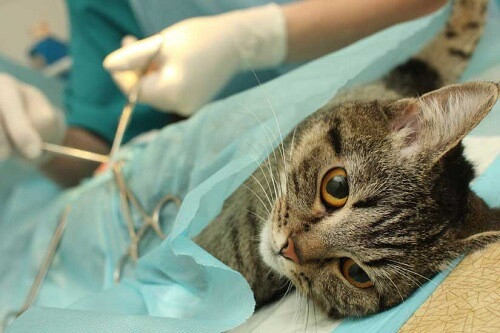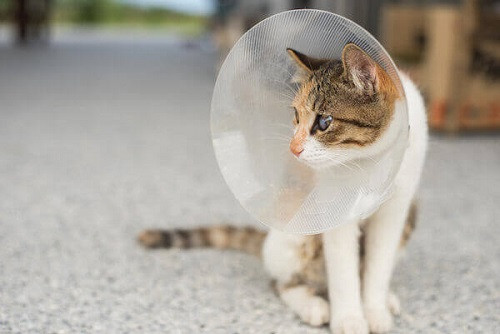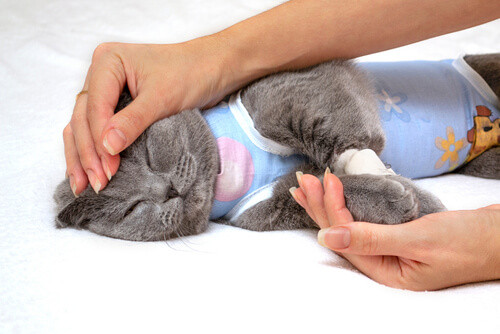 Veterinarians performing spay and neuter surgery on cats to control pet overpopulation and improve feline health.
Veterinarians performing spay and neuter surgery on cats to control pet overpopulation and improve feline health.
Neutering your male cat is a responsible decision for several reasons. Beyond preventing unwanted litters and contributing to the cat overpopulation problem, neutering offers significant health and behavioral benefits for your feline companion. Neutered cats are less likely to develop certain health issues and often exhibit calmer, more домашен behaviors. If you’re considering this important procedure, a primary concern is likely the cost. The price to neuter a cat can vary quite a bit depending on several factors, ranging from free to potentially several hundred dollars. Let’s explore the typical costs associated with neutering a cat and what elements influence the final price.
Understanding the Typical Cost of Cat Neutering Surgery
 Close-up of a veterinarian performing ovariohysterectomy, commonly known as spaying, on a female cat.
Close-up of a veterinarian performing ovariohysterectomy, commonly known as spaying, on a female cat.
Neutering, medically termed castration, is the surgical procedure to remove a male cat’s testicles. This relatively quick and routine surgery is typically performed under general anesthesia, ensuring your cat is asleep and feels no pain. Neutering is recommended for kittens as young as 8 weeks old, and ideally should be done by the time they are 6 months old to prevent unwanted behaviors and health risks associated with unneutered males.
The cost to neuter your cat is not fixed and is influenced by several variables. Geographic location plays a significant role; veterinary costs are generally higher in urban areas or regions with a higher cost of living. The type of veterinary facility you choose also impacts the price. A full-service veterinary clinic will typically charge more than a low-cost spay/neuter clinic.
In general, you can expect to pay between $100 and $300 to neuter a cat at a standard veterinary clinic. This price range usually covers the basic surgery, anesthesia, and pain medication. However, additional services opted for during the procedure can affect the total cost. These may include:
- Pre-anesthetic blood screening: This blood work, while not always mandatory, is recommended to check your cat’s organ function and ensure they are healthy enough for anesthesia.
- IV catheter and intravenous fluids: These provide a direct route for medication administration and help maintain hydration and blood pressure during surgery.
- Specialized surgical monitoring: Advanced monitoring equipment can add to the cost but provides an extra layer of safety during the procedure.
Furthermore, unforeseen circumstances can also increase the cost. For instance, if a cat has cryptorchidism, a condition where one or both testicles have not descended into the scrotum, the neuter surgery becomes more complex, time-consuming, and thus, more expensive.
Exploring Options for Free or Low-Cost Cat Neutering
 Veterinarian team performing a neuter surgery on a cat in a clinic setting, highlighting low-cost spay/neuter services.
Veterinarian team performing a neuter surgery on a cat in a clinic setting, highlighting low-cost spay/neuter services.
If the standard cost of neutering is a concern, numerous resources are available to help you neuter your cat for free or at a reduced cost.
Animal Shelters and Rescue Organizations: Adopting a cat or kitten from a shelter or rescue often includes neutering as part of the adoption fee. In many cases, the animal will already be neutered before you take them home.
Low-Cost Spay/Neuter Clinics: Many communities have dedicated low-cost spay/neuter clinics, often run by humane societies or non-profit organizations. These clinics focus on high-volume, affordable surgeries to combat pet overpopulation. Organizations like the ASPCA provide resources to find low-cost spay/neuter programs in your area. Mobile spay/neuter clinics, such as the Lucy Pet Foundation’s Spay & Neuter Mobiles, also offer accessible and affordable services.
Community and Government Programs: Some local governments or humane societies offer subsidized or free spay/neuter programs, particularly for low-income residents. Check with your local animal control or humane society to inquire about available programs.
Trap-Neuter-Release (TNR) Programs: If you are concerned about feral or stray cats in your community, TNR programs often offer free neutering for feral cats. These programs aim to manage feral cat populations humanely.
Low-cost clinics are able to offer significantly reduced prices, with cat neuter costs ranging from $25 to $75, and cat spays typically between $50 and $150. It’s important to note that these clinics often provide “no-frills” services, meaning they may not include pre-anesthetic bloodwork or IV catheters as standard, focusing on the core surgical procedure to keep costs down. The veterinarians at these clinics are highly experienced in spay and neuter surgeries due to the high volume of procedures they perform.
While pet insurance generally doesn’t cover routine preventive care like neutering, it’s worth considering for unexpected medical expenses. Some companies, like Trupanion, offer comprehensive coverage for accidents and illnesses, providing financial security for your pet’s health needs beyond routine procedures.
Neutering vs. Spaying: Why Neuter is Typically Less Expensive
 Cat recovering comfortably after neuter surgery, wearing a recovery collar to prevent licking the incision site.
Cat recovering comfortably after neuter surgery, wearing a recovery collar to prevent licking the incision site.
You might notice that the cost to neuter a cat is generally lower than the cost to spay a female cat. This price difference is due to the complexity of the surgeries. Neutering is a less invasive procedure compared to spaying. Neutering involves removing the testicles, which are external organs, through a small incision. Often, neuter surgeries are so minimally invasive they do not require sutures. The procedure is quicker and requires less surgical time and resources.
Spaying, or ovariohysterectomy, is a more complex abdominal surgery that involves removing the uterus, ovaries, and fallopian tubes from a female cat. This procedure requires a larger incision, more surgical time, and sutures to close the surgical site. The increased complexity naturally translates to a higher cost.
However, as mentioned earlier, there is an exception where neutering can become more expensive than a typical neuter. In cases of cryptorchidism, where one or both testicles are undescended, the neuter surgery becomes significantly more complicated. It may require more extensive exploration to locate and remove the undescended testicle(s), potentially involving abdominal surgery similar in complexity to a spay, thus increasing the cost.
Frequently Asked Questions about Cat Neutering Costs
How much does it cost to get a cat fixed?
The cost to “fix” a cat (referring to both spaying and neutering) varies widely. For neutering a male cat, expect to pay between $100 to $300 at a regular vet clinic. However, free or low-cost options are available through shelters, rescue organizations, and specialized clinics, potentially reducing the cost to as little as $25-$75.
How much does it cost to neuter a cat at a low-cost clinic?
Low-cost spay/neuter clinics are designed to make these essential surgeries affordable. At such clinics, you can typically expect to pay between $25 and $75 to neuter your male cat. Keep in mind that these prices generally cover the basic surgery, and additional services may be offered at an extra charge.

